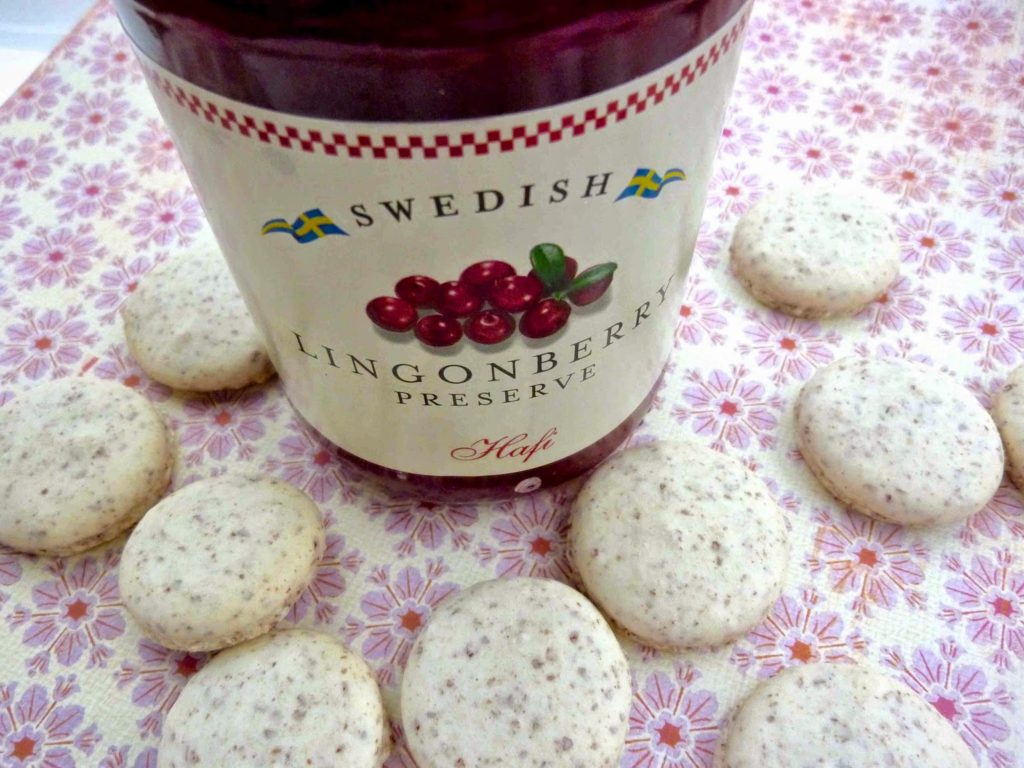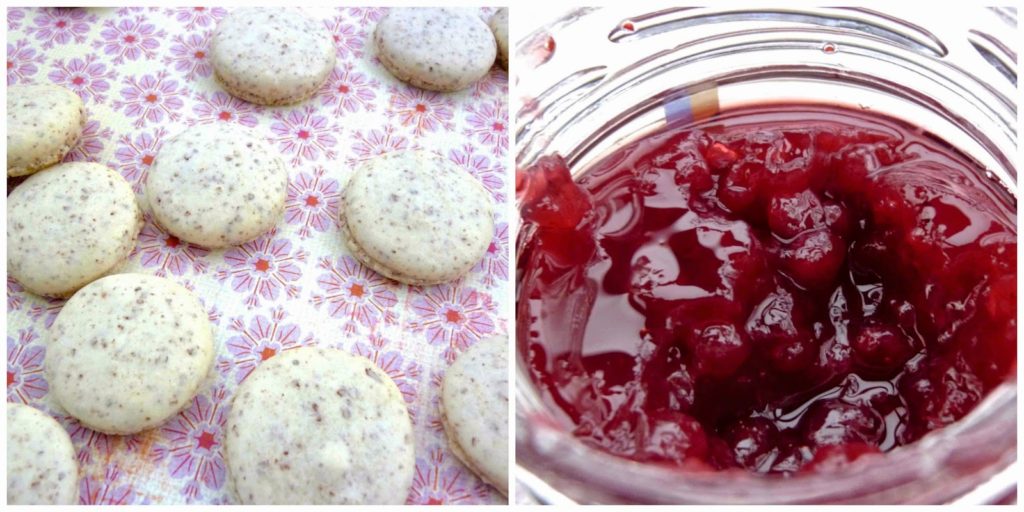3.1K
I don’t know why but I find these macarons Christmasy.
Maybe it’s the spicy shells and the beautiful red lingonberry preserves.
This Scandinavian cousin to the American cranberry tastes both tart and sweet.
Anise flavor is the perfect compliment to this beautiful berry flavor.
Anise French Macarons with
Lingonberry Filling
For the Anise Shells:
Use a kitchen scale for precise measurements.
Ingredients:
- 90 grams of egg whites – aged at least 2 days. Let them sit out on the counter uncovered.
- 25-50 grams extra fine white granulated sugar
- 200 grams of powdered sugar
- 110 Grams of almond flour*
- 2 tablespoons anise powder
- Pinch of cream of tarter
- Pinch of salt
*You can buy almond flour that has been ground with or without the skin. I use the later (blanched). The former looks really nice if you are not coloring the shells. You can also grind your own almond flour by putting whole or sliced almonds in a food processor or blender. If you do, make sure you throw a little of the powdered sugar in to prevent the almonds from forming a paste.
Directions:
- Line two baking sheets with parchment paper or use a silpat.
- Sift the powdered sugar and almond flour together or pulse them together briefly in a food processor. Make sure there are no large pieces.
- Remove two tablespoons of the powdered sugar/almond mixture and discard. Replace with two tablespoons of the anise powder. Side Note: Instead of discarding, I collect these tablespoons of mixture in a separate ziplock bag and when I have enough I use it to make a half batch or full batch of shells. Pulse or whisk until combined thoroughly.
- Whip the egg whites. When they start to get foamy, slowly add the sugar. Continue whipping until you can turn the bowl upside down and nothing slides out. Add the pinches of salt and cream of tartar.
- Add the powdered sugar/almond/anise powder mixture to the egg white mixture and fold, using quick strokes at first then slow down. The batter should have a “flowing like lava” consistency. Make a peak of the batter and if it does not disappear after 5-7 seconds, keep folding. If it’s running all over the place, you will probably have to start over. Place a pastry bag fitted with a round shaped tip in a tall water and and fold the edges down around the glass.
- Fill the pastry bag with the macaron batter, twist the open top to secure and pipe circles onto a baking sheet lined with parchment paper or on a Silpat.
- Let the macarons dry for about a half hour or until they harden.
- Preheat oven to 325 degrees F.
- Place the macarons on the middle rack in the oven. I keep the oven door propped open with a dish towel or wooden spoon.
- I place another empty baking sheet on top to prevent the shells from becoming toasted and discolored.
- Bake for 18-20 minutes.
- When checking them after 10 minutes or so, if the ones in the back of the sheet seem to be cooking faster that the ones in front, flip the tray around.
- To test to see if they are done, peel the baking paper or silpat away from one of the shells. If the shell comes off easily, they are done.
- If you do have a problem with the shells sticking to the surface when removed from the oven, lift up the baking paper and pour a bit of water underneath. this will steam them off the paper.
- Transfer to a baking rack and let cool completely before matching up the shells into pairs according to size.
- Fill with lingonberry preserves or your choice of filling.









